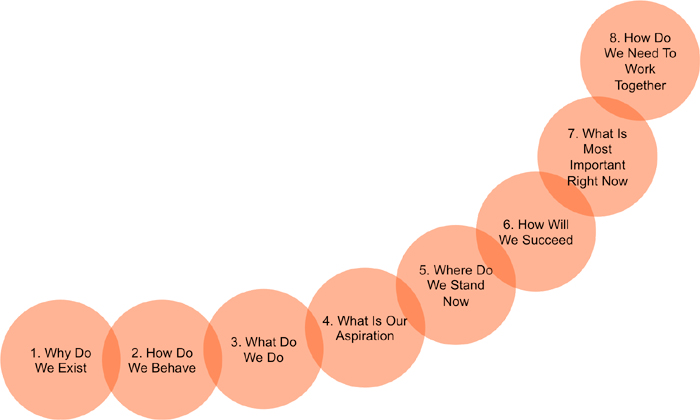You have done it! Over the past 7 weeks we have talked about the 8 Questions that Need to be Answered to Align and Emotionally Commit your Team rationally behind a jointly created future.

By this time, you have:
- Jointly articulated a purpose that is meaningful, inspires and is important for the organization (for inspiration look at AirBnB’s beautiful new purpose)
- Identified what values should guide them
- How you will differentiate yourself
- Identified an exciting aspiration,
- Defined what your current reality is
- Captured your strategy on a one page dashboard
- Have discussed how you are going to tell your strategic story to the rest of the company.
Problems with Executing Your Strategy
“Without Strategy Execution is Aimless, Without Execution Strategy is Useless”
– Morris Chang, CEO of Taiwan Semiconductor Manufacturing Company
As Morris Change quote indicates, your beautifully aligned team is of course worthless if you are unable to execute your strategy. And this is where I see a lot of companies struggle. When we have our two day sessions on strategy and team alignment, I feel tremendous vibes in the room, however I still see many companies fail to make the best use of the momentum they have created.
In my experience, this is caused by the ‘back-to-the-office’ trap. Coming back to the office the day or weekend after and being caught into the email backlog and day to day firefighting scenarios. It could be a big customer complaint that happened whilst you were away or other operational issues that suck the air out of your strategy plan.
The How’s of Successful Strategy Execution
The key for a successful transition from strategy to execution is to plan ahead. To know even before you start your strategy session:
- How you’re going to keep your strategy alive
- How you will follow up
- How you will keep team members accountable for implementation
- How you will communicate the results over time and keep your staff and stakeholders engaged.
In general how you will implement your strategy.
These are all questions that ideally you’ll have answered before you even start your strategy session but certainly agree with your team at the end of the session. I always advise team to have monthly strategy score card sessions and quarterly ‘feet on the table’ review sessions to check whether
- You’re still on track
- Whether things have changed in your environment
- You have to adapt your plan
- What trends you’re spotting that might affect the strategy in the next 24 months
Even more important is to realize that you have to create new disciplines in yourself, your team and your organization. You might need to change your meeting structure and the top team agenda in order to ensure follow up on the strategic plan. You and your team have to learn how to hold each other accountable. They’ll be more on this in my upcoming series on building high performing top teams.
A book that might help you translate your strategy in producing extraordinary results is Chris McChesney, Sean Covey and Jim Huling book called: The 4 Disciplines of Execution. In this they identify 4 disciplines for companies to improve their ability to execute:
- Discipline 1: Focus on the Wildly Important
- Discipline 2: Act on the Lead Measures
- Discipline 3: Keep a Compelling Scoreboard
- Discipline 4: Create a Cadence of Accountability
So of course your strategy is only the beginning. A brilliant strategy doesn’t promise brilliant results. It first of all needs to be a strategy that is bought by all stakeholders, secondly it needs to be executed and finally it needs to be adapted to changing circumstances. Easier said than done, but with the right mindset and focus it’s not impossible.
And as Naveen Jain the founder of InfoSpace says:
“Success doesn’t necessarily come from breakthrough innovation but from flawless execution. A great strategy alone won’t win a game or a battle; the win comes from basic blocking and tackling”.
Photo Credits: Marcin Wichary via Photopin cc




[…] To deliver results you have to work together with your team on how you will achieve this vision and cascade your strategy to the lowest level of the organisation. It must be done in a way where even the receptionist and […]